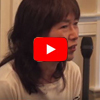Books on Culture: Life After Art, Part Three
Blog / Produced by The High Calling
I’m pretty sure my heels left ruts in the red clay when my husband’s transfer pulled us from the Georgia pines to the Florida palms. I was quite happy nestled in my Southern belle box with my magnolia blossoms and sweet tea. With the help of a Country Living featured decorator, I’d finally feathered a comfortable nest, and the thought of abandoning it to renters for 18 months precipitated a major meltdown. I did not want to be uprooted again, and I refused to go.
Then I remembered the words to the Song of Ruth sung at our wedding: “Where you go, I will go; and where you lodge, I will lodge.”
I knew I had to make a choice. I could either continue to rebel and whine. I could resign myself to misery. Or, since I couldn’t erase these marriage-carved lines, I could embrace them and find a way to re-create some beauty within them.
So I began to record life. I kept a journal. I set up an office and started to write in earnest, drawing lines and charts on file folders to track submissions.
And I took a quilting class. Then another. And another.
I learned how to work within the limits of dimension and design--with patterns like log cabins, drunkard’s paths, grandmother’s fans, and Ohio stars. I learned how to piece pieces into a whole, how to applique scraps by tucking ragged edges, and how to sandwich batting between top and bottom with small, even stitches. I learned to color inside the constraints of many days and nights alone while my husband traveled.
With this physical move, we also moved into a season of infertility and pregnancy loss. Sometimes I thought the lines of loneliness and sorrow might just cave in and crush me.
Those months in Florida, that stretched into four years, were hard, yes—but art redeemed them.
And it was good.
Matt Appling speaks to life’s lines and limitations and constraints in chapter 4 of Life after Art: What You Forgot about Life and Faith since You Left the Art Room.
What if the very constraints on your life, which defeat and frustrate you, which you try to rebel against to no avail, have been placed on your life because they are good? What if the constraints on your life were there to actually make your life beautiful? What if you learned that even the mistakes that have marked your life can be redeemed? What if you learned, rather than to be defeated by the lines that have been marked on your life, to color inside the lines?
I entered a contest. Each of us would design an original 12- x 12-inch block using a packet of the same kind, color, and amount of fabric. The quilt shop would display the blocks, and customers would vote on their favorites. The shop owner would then create a wall hanging from the thirteen entries with the most votes. One of us would win it in a drawing.
I sketched and colored my square on graph paper. I pieced and appliqued, and while it wasn’t perfect, I finished within the allotted time frame. My square (gasp!) won a place in the completed project.
I didn’t win that quilt, but I won so much more when I chose not to rebel against but to color within new lines marked out for me.
And it was good.
Appling reminds us that we can “learn to let go of the self-defeating pursuit of trying to erase the lines” in our lives “or pretend they are not there, or that they do not matter,” Instead, we can choose to embrace those lines and realize that inside them, “the lines of money, talent, time, energy, health, job, beauty, disability, and every other line that you see as a limit—there is still a lot of room for vibrant, joyful, color.”
Even in the face of an uprooting, rut-making relocation.
What limitations line your life? How can you embrace them, find or create beauty within them?
On Mondays in September we're discussing Life after Art: What You Forgot about Life and Faith Since You Left the Art Room by Matt Appling. If you are reading along this month, join the discussion in the comments or drop you link there if you blog your thoughts. Next week artist Harold Sikkema leads our discussion of chapter five. I hope you'll join us!





